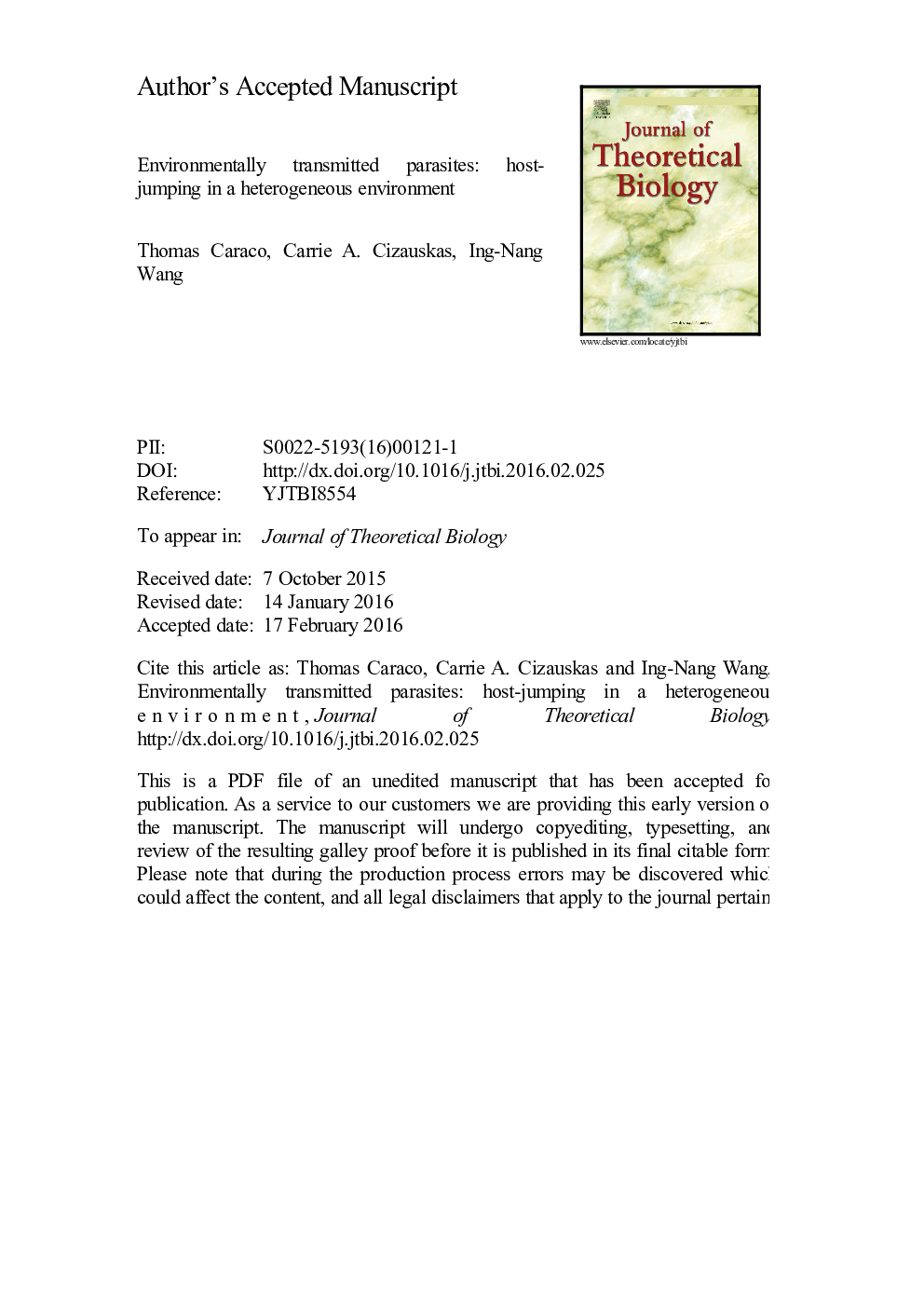| Article ID | Journal | Published Year | Pages | File Type |
|---|---|---|---|---|
| 6369258 | Journal of Theoretical Biology | 2016 | 38 Pages |
Abstract
Groups of chronically infected reservoir-hosts contaminate resource patches by shedding a parasite׳s free-living stage. Novel-host groups visit the same patches, where they are exposed to infection. We treat arrival at patches, levels of parasite deposition, and infection of the novel host as stochastic processes, and derive the expected time elapsing until a host-jump (initial infection of a novel host) occurs. At stationarity, mean parasite densities are independent of reservoir-host group size. But within-patch parasite-density variances increase with reservoir group size. The probability of infecting a novel host declines with parasite-density variance; consequently larger reservoir groups extend the mean waiting time for host-jumping. Larger novel-host groups increase the probability of a host-jump during any single patch visit, but also reduce the total number of visits per unit time. Interaction of these effects implies that the waiting time for the first infection increases with the novel-host group size. If the reservoir-host uses resource patches in any non-uniform manner, reduced spatial overlap between host species increases the waiting time for host-jumping.
Keywords
Related Topics
Life Sciences
Agricultural and Biological Sciences
Agricultural and Biological Sciences (General)
Authors
Thomas Caraco, Carrie A. Cizauskas, Ing-Nang Wang,
